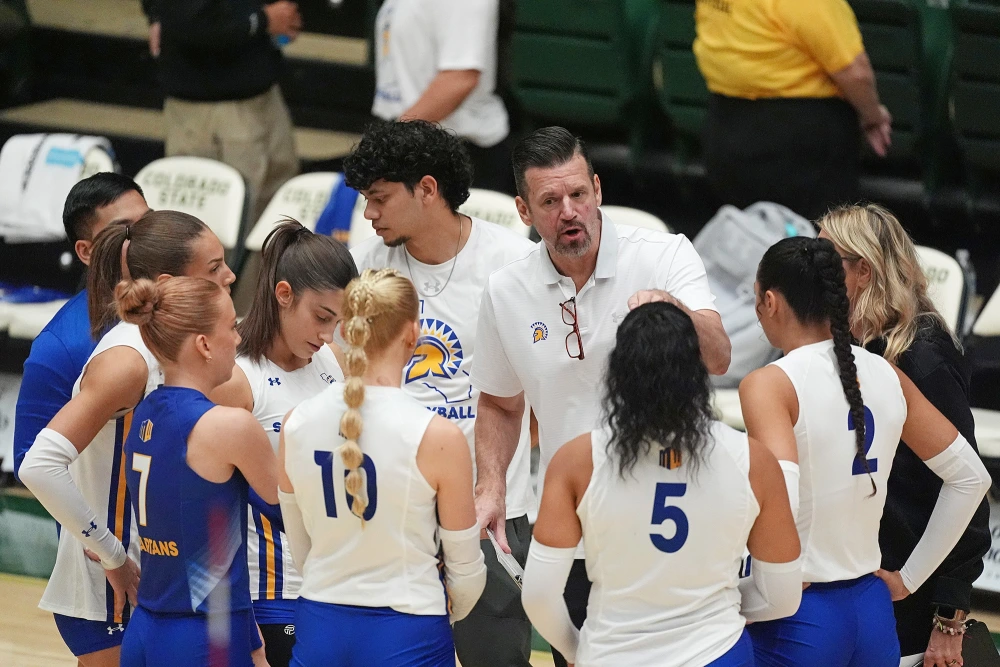
Sedona Sweginnis | Sports Editor
December 12, 2024
Along with the rising presence of transgender people in today’s society has emerged the question of their place in athletics. While it is desired to give these athletes equal opportunities to compete, it is currently unclear how best to resolve this sensitive but pressing issue in a mindful yet just manner.
As of now, the majority of transgender athletes have chosen to compete in the division of sports that aligns with their gender identification rather than that in which they were born. Unfortunately, many issues as well as debates have risen in the case of transgender females, those who were born male but now identify as female, participating in the female divisions of sports.
Female athletes, as well as many others, have spoken out against transgender females competing in women’s sports. This argument maintains that allowing transgender female athletes to participate in female sports creates an unfair and even dangerous atmosphere for cisgender female athletes. Since transgender females were born as males, their bodies contain high levels of testosterone, which gives them a distinct and considerable physical advantage. The testosterone they have as a result of their male birth gives them increased muscle mass and bone strength as well as larger and stronger hearts and lungs. The clear physical advantage that men have over women is a primary reason for the initial creation of separate athletic divisions, inferring that allowing those born as men to compete with women is a step back for the overall community of female athletes.
Others may say that hormone therapy and operations allow men to eliminate the biological advantages that they had as a man. However, there is limited evidence in this field and that which does exist, such as a study outlined by Oxford Academic, states that while hormone levels indeed get closer to that of a cisgender person after years of gender-affirming hormone therapy, the levels do not become equal in the studies, indicating that transgender females will always maintain their advantage, even after going through hormone therapy.
For instance, only two years ago on September 1, 2022 in North Carolina, high school volleyball player Payton McNabb was knocked out by a powerful spike from an athlete who identified as female during a game. McNabb sustained considerable injuries to her head and neck from this brutal hit, resulting in extreme brain trauma, vision impairments, and, most notably, partial paralysis. The height and strength of this transgender player not only created an unfair competition but put girls in genuine danger as they biologically cannot compare to the size and strength of a male. McNabb will struggle with the effects of this injury for the rest of her life but uses her testimony as a vantage point for spreading awareness and fighting against biological males competing in girls’ sports.

The undeniable physical advantage that males possess in the field of athletics is accepted and is the reason separate divisions are needed for equality. Allowing athletes with the biological advantages of a male to participate in female sports eliminates the equality, sportsmanship, opportunity and competition on the women’s side of sports. San Clemente High School junior Margot Lee explained that “it is important for all girls and women to have a fair chance at succeeding at their sport” in an even playing field against other women. Female athletes work hard at their sports, but the superior size and strength that transgender females can biologically achieve make them unfair competitors.
This is clearly demonstrated by Lia Thomas, who was born male and competed for the men’s swim team at the University of Pennsylvania, ranked in the mid 500s in the NCAA, before winning the women’s NCAA Division I title for the 500 freestyle as a transgender female in 2020, highlighting the immense differences in the field of competition and the extreme advantage that those born male have over females in athletics.
Junior, and three year varsity cross country runner, Natalie Deyhimy is considerate, but definitely stated that “sports are a physical competition and have nothing to do with identity.” She believed that “there is nothing wrong with identifying as a girl,” however she maintained that “if someone has a male body, they should compete in the male category.” While the debate about gender identity remains prevalent, Deyhimy made it clear that sports are an entirely separate issue that must be addressed differently.
It is probable that the best option in order to maintain safety and equality in women’s sports is for only cisgender females to compete with other cisgender females. However, arguably the best option of creating a completely separate division for transgender athletes to fairly compete with each other, so that they all maintain the same biological advantages as those they compete with, seems currently out of reach. Although, the hope of creating a separate division for transgender athletes seems the best solution for sports equality down the line.
Although they may be reluctant to compete with the gender group that they do not identify with, transgender females maintain many of the same biological advantages in athletics as cisgender males, arguably making competing with the gender one is born as the most equal and fair option in a sensitive situation until a new division could be formed. This would allow women to keep the right to equality and fair athletic competition that they fought for.

Leave a Reply